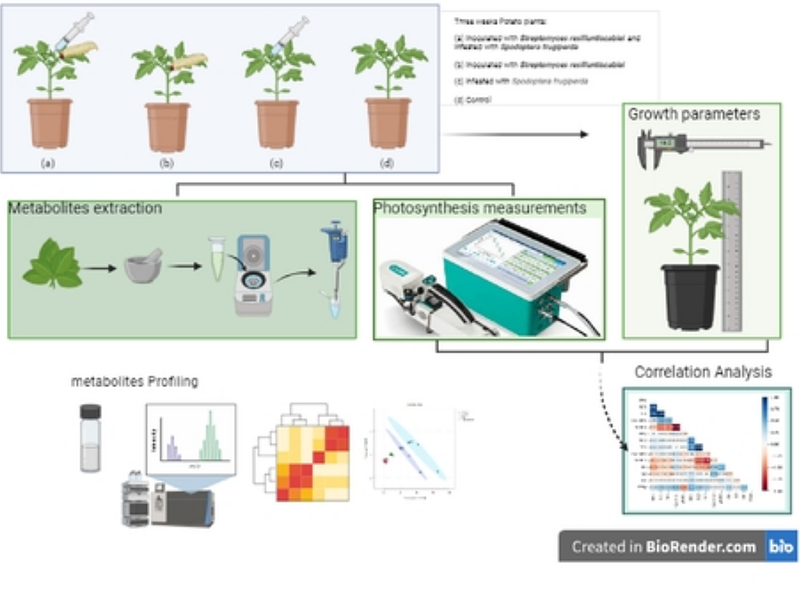Pseudomonas syringae pv. tomato and the fall armyworm modulate the morpho-physiology and the metabolome of potato plants

Pseudomonas syringae pv. tomato and the fall armyworm modulate the morpho-physiology and the metabolome of potato plants
Maluleke, S.; Ogugua, U. V.; Madala, N. E.; Sibisi, P.; Mazibuko, M. P.; Nofemela, S. R.; Udeh, E. L.; Ntushelo, K.
AbstractPotato seedlings were challenged with two parasites, namely, the fall armyworm and Pseudomonas syringae pv. tomato, in combination and individually. Alone, the fall armyworm reduced plant height but not when combined with the bacterium. Administered individually, the parasites administered reduced total tuber weight. The fall armyworm also reduced stomatal conductance and transpiration efficiency either combined with the bacterium or alone. Only when combined with the bacterium did the pest reduce intercellular CO2 and the ratio of intercellular to ambient CO2 concentration (Ci/Ca). Combined with the bacterium the pest also increased water use efficiency. Exhaustive correlation of all measured parameters showed a strong and positive relationship between plant height and total tuber weight, plant height and stem diameter, photosynthesis rate and transpiration efficiency, photosynthesis rate and stomatal conductance, photosynthesis rate and intercellular CO2 concentration, stomatal conductance vs Ci/Ca ratio, transpiration efficiency and intercellular CO2 concentration, intercellular CO2 concentration Ci/Ca ratio, transpiration efficiency and finally transpiration efficiency and Ci/Ca ratio. Strong and negative correlations were found in the correlations of water use efficiency vs stomatal conductance, intercellular CO2 concentration, transpiration efficiency and Ci/Ca. The bacterium may deter the fall armyworm as shown by the failure of the insect to reduce plant height in the presence of the bacterium but not when administered alone. On the effect on tuber, both parasites deter each other. Some physiological responses of the plant, intercellular CO2 concentration, Ci/Ca and water use efficiency revealed synergy between the two parasites. It was further discovered that the pest induces metabolomic changes in the leaves of potato albeit that these were less in the co-challenged plants. In conclusion, the pest and the bacterium induce morpho-physiological and metabolomic changes in potato seedlings, their effects on the measured parameters vary, and finally the two parasites interact, with the bacterium likely deterring the pest.